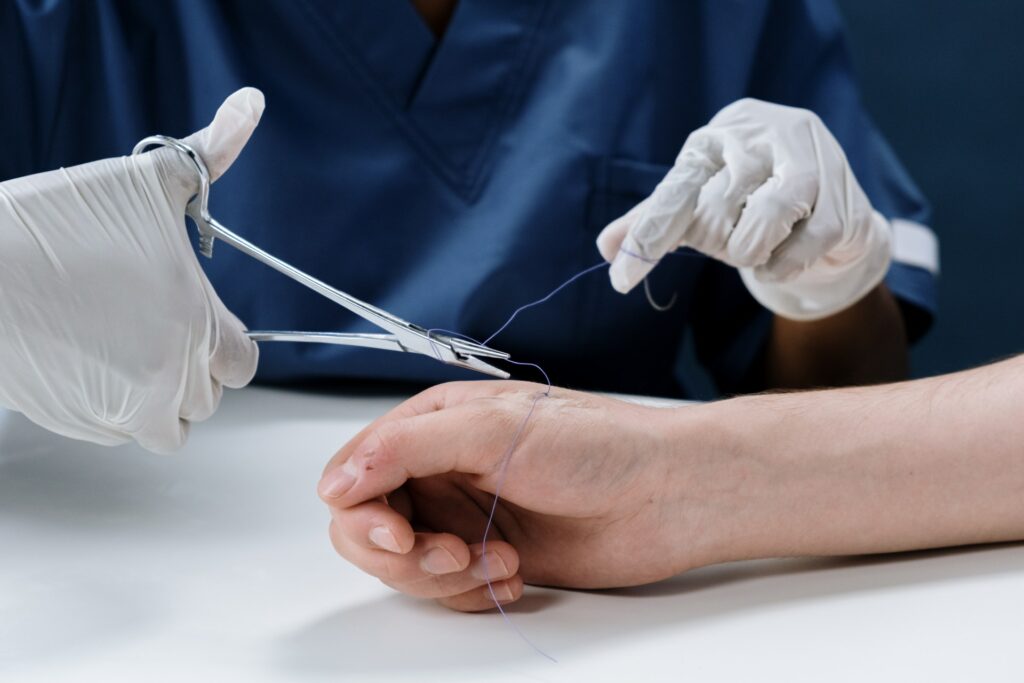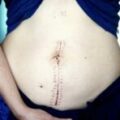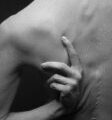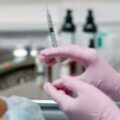It is said that the scar is the surgeon’s calling card. Many factors influence wound healing after minor and major surgery. We, the surgeons, play an important role in the technique and material we use to close the wound. We need to be very gentle with the skin, so as not to bruise it unnecessarily, and at the same time efficient, so that the wound heals quietly after suturing with as little traction as possible.
When a mole is removed surgically, it is almost always going to leave a scar. But even this can look different – from barely visible and as small as a hair to wide, sometimes red and protruding. In this article, you will read about how a mole is removed and how best to take care of a fresh post-operative wound.
How is a mole removed?
If we decide that surgical excision is the best way to remove a mole (or other skin growth), after disinfecting the area, we numb it with a local anaesthetic injected into the skin. Thanks to this, the actual removal and stitches will not hurt you. The shape of the piece of skin we cut out is similar to an almond, pointed at both ends. It is also important that it is correctly aligned with the so-called skin cleavage line. This shape and placement allows the edges of the skin to fit together nicely and the wound to heal more easily with less tension.
The sutures are available in different thicknesses. For the face and décolleté, where the skin is thin and does not stretch very much, we use thin threads. For areas where the skin is tighter and more taut (e.g. the back), we use thicker threads. These fibres can be absorbed by the skin (more commonly used by plastic surgeons) or they can be removed after a few days. Stitches are kept shortest on the face and eyelids. Sometimes, if the wound is larger, the stitches are removed gradually rather than all in one day. This is better because they do not lose all their support at once, and it also reduces the risk of dehiscence.
Once the wound has been sutured and cleaned of blood, we put a sterile plaster over it. This will protect it and apply slight pressure to stop any remaining small bleeding.
I sometimes use a circular scalpel to remove small bruises of up to 5mm without stitches. This technique has worked very well for me, especially in areas where the skin is very tight. The skin at the removal site grows back to the surface and the pink circular scar fades over time and looks good. There are many techniques for removing unwanted skin formations. I always talk to patients about the different alternatives and procedures, why I choose a particular method of removal and what the outcome will be.

How do I care for my wound after surgery?
Leave the dressing on the wound for at least 2-3 days. Be careful when showering and do not soak the area during these days. On the third day, remove the plaster and wash the wound gently with a stream of water without soap. Gently disinfect with an antiseptic and reapply when dry. Covering the wound with the plaster will protect the wound and prevent the stitches from rubbing against clothing. You can repeat this procedure every day. If the patches irritate you and you’re not going anywhere, you can leave a smaller wound “in the air” at home without taping it over.
When I was working at Teplit Hospital, one of Dr Abed’s colleagues told me that he advised his patients not to use a regular plaster but a hydrogel plaster from the chemist. This patch only needs to be changed about every 3 days. In the special moist environment, the wounds heal beautifully and the scars are less visible. Hemagel provides a similar service. It can be used on both fresh wounds and scars.
Can moles be removed in other ways?
Some types of moles can be removed by transversal excision from the skin surface (shave excision) or by vaporisation with a CO2 laser or electrocautery. The more pigmented and the flatter the mole, the more I tend to use classic excision. The big advantage of excision is that the whole mole can be sent for histological analysis and will not come back (which is a risk after laser removal). I only remove high-risk moles by conventional excision.
What influences the healing of the wound?
First of all, cleanliness is important. Do not touch the wound unnecessarily and avoid getting it dirty. Don’t exercise and avoid sudden movements so that the wound heals with as little stress as possible. The recommended period of rest is 6 weeks. If you have a wound in an area that is frequently stressed (e.g. legs, breasts), wear compression clothing or use a compression bandage.
We all heal at different speeds. Our health, age, immunity, stress and diet all have a big impact on healing. If you don’t have any major healing problems, you don’t need any special supplements, just a varied diet. Some people experience better healing after taking high quality collagen, vitamins C, E and zinc. Arnica montana is popular for improving the healing of fresh wounds after surgery.
My advice outside the clinic
Every removal must be preceded by a dermatoscopic examination, where the dermatologist examines the moles with a special magnifying glass. Before the actual removal of the mole, it is important to consider whether the procedure is medical or cosmetic. If you don’t like the mole, think about whether the scar will bother you more. As I wrote above, there are many methods of mole removal, and the wound care regimen depends on the method of surgery. Trust your doctor and ask questions if you are unsure.
Do you have any experience of removing moles or other skin problems? Share it with others in the comments section 🙂





